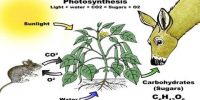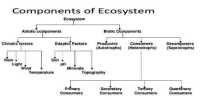Everything surrounding us forms our environment. There are two types of environment which are recognized, the non-living environment and the living environment. The relation between these two environments is very intimate. The main factors of non-living environment are soil, water and air which provide food and shelter to the living organisms.
The environment influences our life deeply. We get all kinds of things from the environment that helps us to stay alive. Different types of animals grow in different environments, e.g. rivers, canals, lakes, ponds etc., which are able to meet the requirements of different aquatic animals but the terrestrial animals cannot live in this type of environment. There is scarcity of water in the desert, so the number of plants growing in the desert is very limited. In this type of environment, plants are rarely seen. Aquatic animals and plants are almost rare.
If we observe, we will notice that both plants and animals living in the saline soil of the Sundarbans are not found in the forests of Sylhet and Chittagong Hill tracts. From this, it is understood that the organisms, which grow and live in some particular natural environment have their own individuality. In this way, different organisms (plants or animals) together form a biotic community. Each community consists of plants, animals and micro-organisms. They live together in co-operation with one another. The climatic condition of a particular geographical region depends upon the topography and configuration of that region. The animals and plants of a particular region are influenced by the climate of their habitat.
Besides, the animals of that region also have influence upon the plants. In this way the inseparable relation between the environment and the biotic community of a particular region is formed. The biotic community and its non-living environment are dependable on each other.













